It is the following listing in the Marriage Register of South Kingston, Rhode Island:
A transcription is as follows: “
Thomas Cullerwell Was Joyned in Mariage to Abigaile his Wife the 22d Day of february 1719/20 He took her in Marriage After She had Gone four times A Cros the Highway In Only her Shift and hairlace And No Other Clothing. Joined to Gether in Marriage before me – George Hassard, Justice”
Wait… what? Only her shift and hairlace???? If you’re not already familiar with what these items are, a shift was basically underwear, a long cotton or muslin nightgown that was very lose fitting but also left very little for modesty with any moisture or cold – and this marriage took place in February! This took some serious dedication. A hairlace was a simple lace hair covering.
I just had to look this up. What was this all about? Why would this have been done? Was this walking across the highway in her shift for the marriage, or was it an unrelated act of crazy – and he married her anyway? The answers are scant, to be honest. It is quite easy to find sketchy modern blog posts talking about the fascinating practice of the “shift-marriage” that explain (without reference) that widows in old England and colonial America believed, erroneously, that their new husbands would not be responsible for the debts of their late husbands. If this were the case in this marriage, it would be strange that Abigail would not be listed as a Widow and specifically not mention the name of her late husband (as we see with the Widow Sarah Cook when she remarried in 1705 in the same register). And for that matter, why didn’t Sarah practice the same ceremony when she remarried? In fact, Abigail is the only marriage of this kind in the several pages of early registered marriages.
While I fully admit that a much better search could be done on the subject, I did attempt a search for any other colonial references to these shift marriages and why they were done. I searched several different newspaper archives that have records dating to the 18th century. I found nothing until the 1890’s at which time people were searching for any authentic reference to a colonial shift-marriage. It seems that the Victorians may have popularized this idea, as they so loved to do, with very little evidence. In fact, the romanticism of it may have started in 1876 with the publication “Brief History of the Joy Family” by Catherine Cornelia Joy Dyer who told the story of the 1789 marriage of Major Moses Joy to a Mrs. Ward. In this version Mrs Ward stood nude in a closet, putting one arm through a hole in the door during the ceremony, and then dressed and emerged anew. But in trying to search the original records I could not find any reference to an actual belief by those married who married in this way, that their debts would be erased. And since there were no laws supporting this, it’s very unlikely that any creditors would accept it and just forget the funds owed them.
A more likely suggestion, in my opinion, may center around the idea of “renewal”, or a fresh start. The literal shedding of all worldly goods, even the shirt on her back (but not the shift), as an expression of a new start with a new husband or as a new life in marriage. It could be seen, on the part of the bride, as an act of loyalty and fidelity to her future husband. With that in mind, and from a modern perspective, it’s a harsh reminder of how colonial women were really seen as property with no rights of their own. After all, why was she the one down to her shift in the middle of the cold February? Why not Thomas? Or both of them? There is no reference at all of any man doing anything remotely similar – the suggestion doesn’t seem to enter anyone’s mind. Abigail isn’t even given a family name, there is no hint to a previous marriage or who her parents may have been, just “Abigaile, his Wife”. Just as we have no name for the wife of John Sheldon Jr, the mother of his many children, and we only know that his mother was named Sarah because he left her a room to live out the remainder of her life in peace. At least, the very least, he referred to her as “My Honored mother Sarah” – the only reference we have to her existance.
These little stories are what help give us context to better understand the lives of our ancestors, in the time and place that they lived, To understand their life perspectives, their ideals, their morality or lack there of. What else might we learn?
Dale Sheldon Copyright 2021. All Rights Reserved.
In an attempt to better understand the early Sheldons of South Kingstown, Rhode Island, I’ve been working to transcribe and index all of the original records of that township. It has already been an interesting experience that has led me into a deep dive into the gopher tunnels of genealogy that we all seem to find ourselves traversing.
The other day I came across an interesting new record that I just had to share. It is not directly related to a Sheldon, but being an unusual event in the township of South Kingston, a small community, it must have been known to the third generation of our Sheldon line in that area (John Sheldon Jr having died in 1705).
It is the following listing in the Marriage Register of South Kingston, Rhode Island:
A transcription is as follows: “
Thomas Cullerwell Was Joyned in Mariage to Abigaile his Wife the 22d Day of february 1719/20 He took her in Marriage After She had Gone four times A Cros the Highway In Only her Shift and hairlace And No Other Clothing. Joined to Gether in Marriage before me – George Hassard, Justice”
Wait… what? Only her shift and hairlace???? If you’re not already familiar with what these items are, a shift was basically underwear, a long cotton or muslin nightgown that was very lose fitting but also left very little for modesty with any moisture or cold – and this marriage took place in February! This took some serious dedication. A hairlace was a simple lace hair covering.
I just had to look this up. What was this all about? Why would this have been done? Was this walking across the highway in her shift for the marriage, or was it an unrelated act of crazy – and he married her anyway? The answers are scant, to be honest. It is quite easy to find sketchy modern blog posts talking about the fascinating practice of the “shift-marriage” that explain (without reference) that widows in old England and colonial America believed, erroneously, that their new husbands would not be responsible for the debts of their late husbands. If this were the case in this marriage, it would be strange that Abigail would not be listed as a Widow and specifically not mention the name of her late husband (as we see with the Widow Sarah Cook when she remarried in 1705 in the same register). And for that matter, why didn’t Sarah practice the same ceremony when she remarried? In fact, Abigail is the only marriage of this kind in the several pages of early registered marriages.
While I fully admit that a much better search could be done on the subject, I did attempt a search for any other colonial references to these shift marriages and why they were done. I searched several different newspaper archives that have records dating to the 18th century. I found nothing until the 1890’s at which time people were searching for any authentic reference to a colonial shift-marriage. It seems that the Victorians may have popularized this idea, as they so loved to do, with very little evidence. In fact, the romanticism of it may have started in 1876 with the publication “Brief History of the Joy Family” by Catherine Cornelia Joy Dyer who told the story of the 1789 marriage of Major Moses Joy to a Mrs. Ward. In this version Mrs Ward stood nude in a closet, putting one arm through a hole in the door during the ceremony, and then dressed and emerged anew. But in trying to search the original records I could not find any reference to an actual belief by those married who married in this way, that their debts would be erased. And since there were no laws supporting this, it’s very unlikely that any creditors would accept it and just forget the funds owed them.
A more likely suggestion, in my opinion, may center around the idea of “renewal”, or a fresh start. The literal shedding of all worldly goods, even the shirt on her back (but not the shift), as an expression of a new start with a new husband or as a new life in marriage. It could be seen, on the part of the bride, as an act of loyalty and fidelity to her future husband. With that in mind, and from a modern perspective, it’s a harsh reminder of how colonial women were really seen as property with no rights of their own. After all, why was she the one down to her shift in the middle of the cold February? Why not Thomas? Or both of them? There is no reference at all of any man doing anything remotely similar – the suggestion doesn’t seem to enter anyone’s mind. Abigail isn’t even given a family name, there is no hint to a previous marriage or who her parents may have been, just “Abigaile, his Wife”. Just as we have no name for the wife of John Sheldon Jr, the mother of his many children, and we only know that his mother was named Sarah because he left her a room to live out the remainder of her life in peace. At least, the very least, he referred to her as “My Honored mother Sarah” – the only reference we have to her existance.
These little stories are what help give us context to better understand the lives of our ancestors, in the time and place that they lived, To understand their life perspectives, their ideals, their morality or lack there of. What else might we learn?
Dale Sheldon Copyright 2021. All Rights Reserved.

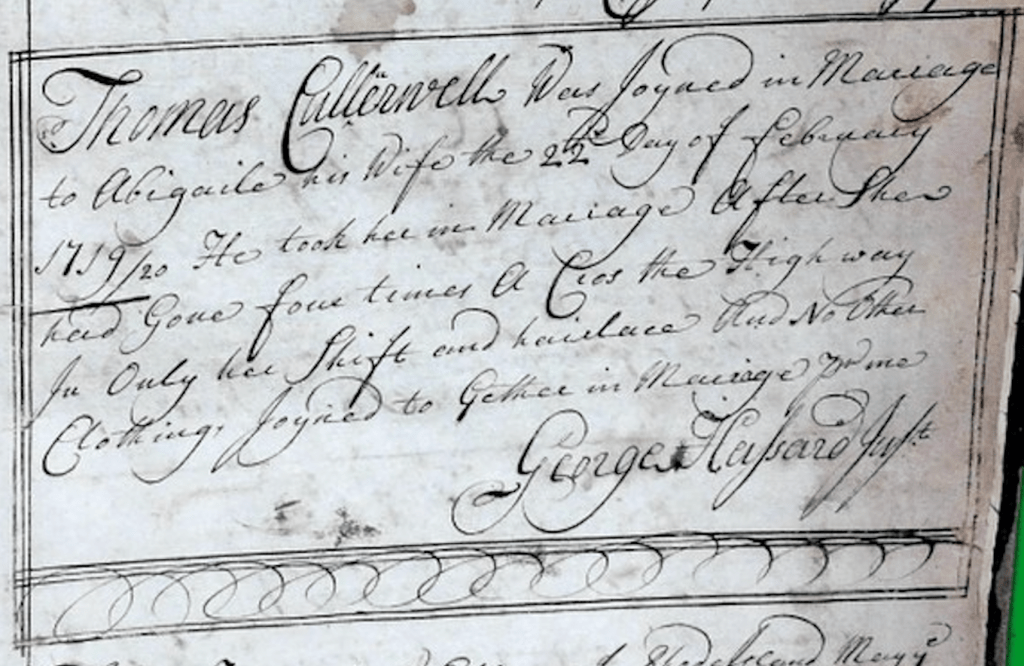
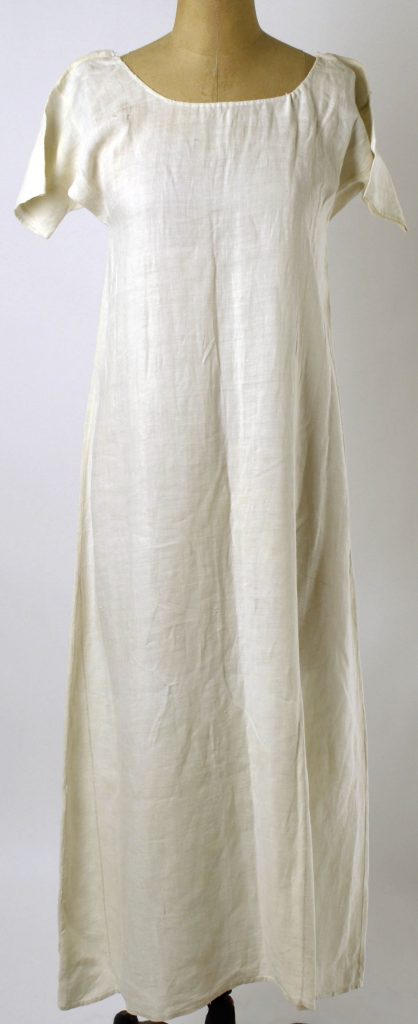
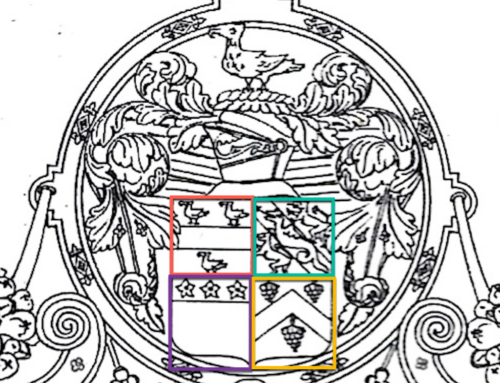
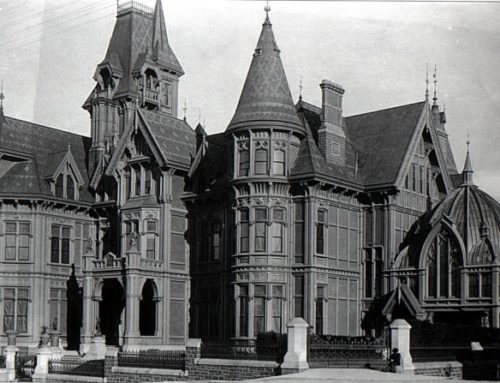

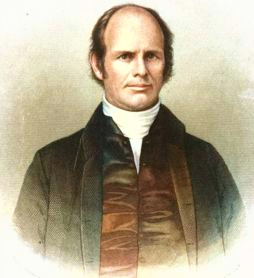
Leave A Comment
You must be logged in to post a comment.